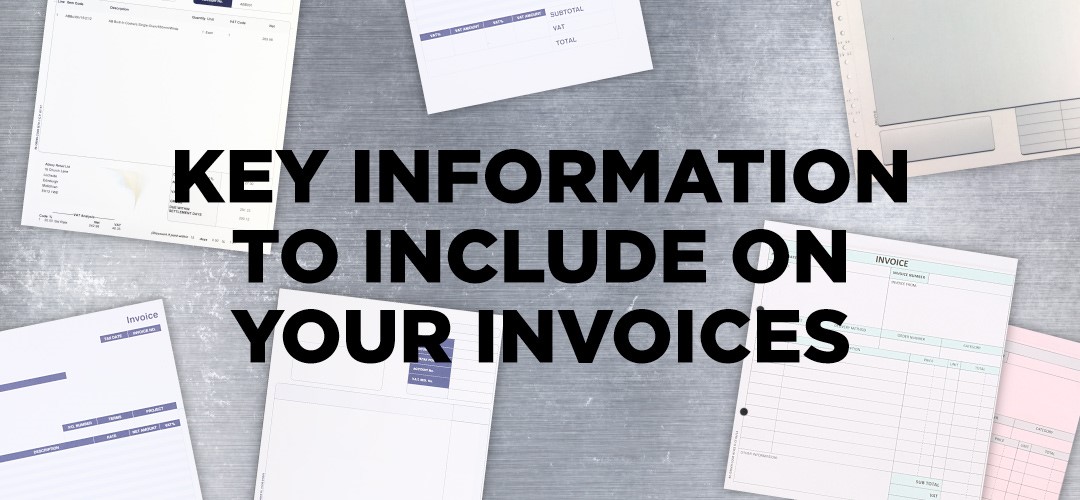Next Working Day Delivery
Orders received by 3pm Monday-Thursday and 1pm Friday will be despatched same day.
Key information to include on your invoices
September 17th 2020

Sending invoices to your customers is an essential part of any business, ensuring you are paid for your goods or services helps keeps your cash flow running smoothly.
A well formatted invoice can make a huge difference to your customers, not only does it send a good impression they also help avoid any confusion from unclear or incomplete information.
Depending on your business type, the legal requirements for what you must show on your invoices will vary.
What you must include on your invoices.
- ‘Invoice’
- Ensure everyone can identify the document and differentiate it from credit notes, quotes, or receipts.
- Your company name and address
- This differs for sole traders and limited companies, but you should clearly display your trading name, business address and how a customer should contact you in case of a query.
- Unique invoice number
- For clear identification purposes this number must be unique to each invoice (using a sequential numbering system is the easiest option for this). The numbering system can use numbers and letters.
- Keep a record of the number and references used.
- The customer name and address
- This is a standard procedure on invoices (excluding simplified VAT invoices) but it is essential for any customers who want to claim back the VAT they’ve been charged.
- Purchase order number
- If your customer provides you with a purchase order number this should be shown clearly on the invoice.
- Supply date
- Also referred to as ‘the date of supply’ this is when the goods or services were issued. The supply date may be different to the invoice date but is usually within 30 days.
- Invoice date
- The date when the invoice was generated.
- Description of the goods or service
- A clear description of the items being invoiced, each separate product or service will need splitting onto a new line for clear identification. You should also add the price of each item along side its description.
- Total amount payable
- Calculate the total cost owed.
- Payment terms & how to pay
- The terms of the length of payment would usually be in your terms and conditions and agreed by your customers. This will indicate how long they have to pay the invoice and you’ll also need to provide your payment details (these will vary depending on your business).
Don’t forget to add any relevant VAT details for your company, and if in doubt always check with your accountant.
Our range of compatible invoices allow you to use the accountancy software you are comfortable with. View the range today.





